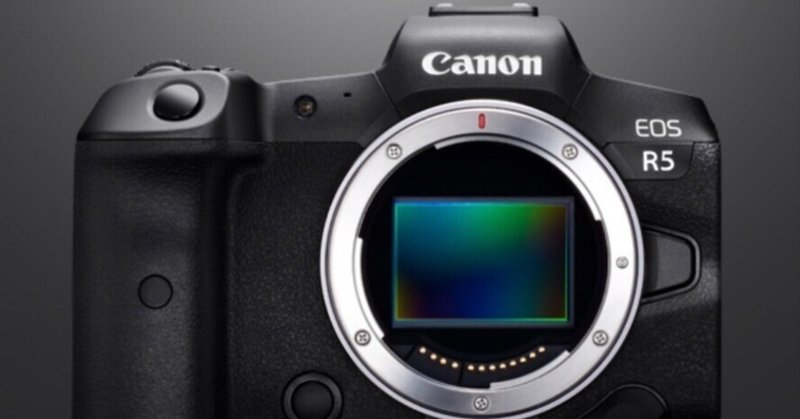
Canon Announces Development of New Full-Frame Mirrorless Camera: Can it Survive the Deathly Event?
2020.02.16 06:00
On February 13, 2020, Canon announced that it is developing the EOS R5, its third full-frame mirrorless camera. The projected release date, price, and detailed specifications were not disclosed.
As I have written in my previous articles for Agora, Sony has launched a number of attractive products in recent years, including ultra-high-performance full-size mirrorless single-lens reflex camera bodies and lenses. Sony's monopoly in the single-lens reflex camera market is almost firmly established.
Last year, Sony released the α7R IV and α9 II, so the rationale for daring to choose Canon's SLR cameras is almost zero. Many professionals and high-amateurs who have been using Canon products for many years have already switched to Sony products. I often hear people say, "I'm glad I took the plunge and left Canon behind and switched to Sony.
Although the EOS R5 is not a mirrorless version of the flagship EOS-1D series of SLR cameras that have been widely used in sports, news reporting, and other "battlefields," it conveys the enthusiasm of Canon, which is developing the EOS R5 with a backwater approach as it wanders along the death line. Let me explain in detail.
First, the continuous shooting performance is amazing. They are aiming to achieve 20 fps when using the electronic shutter and 12 fps when using the mechanical shutter. The continuous shooting speed when using the electronic shutter is on par with Sony's "α9 II," and when using the mechanical shutter, it surpasses the "α9 II" at 10 fps. When using a mechanical shutter, the shutter curtain must physically be moved at high speed, which means that a very powerful motor must be employed.
The announcement does not mention any specifications for the CMOS sensor, and at this point, it is not at all clear whether the camera will use something like the anti-distortion shutter (an electronic shutter that minimizes the occurrence of motion distortion) that Sony used in the α9 II. If Canon achieves continuous shooting performance of 12 fps when using the mechanical shutter, which does not cause motion distortion, sooner than other companies, it is expected to be the fastest full-frame mirrorless camera in the world.
The ability to shoot 8K video with a camera of this size is also amazing. Almost all digital cameras currently on the market are now capable of 4K video, but 8K is exceptional because it is four times the resolution of 4K. The ability to cut out high-resolution still images and process them into 4K video will also be possible, and the ability to shoot 8K video means that the CMOS sensor will have a pixel count of at least 33 MP.
Canon was quick to develop in-lens image stabilization, but lagged far behind its competitors in the development of in-body image stabilization. Finally, the EOS R5 will be the first Canon camera to feature in-body image stabilization.
When using a lens that does not have in-lens image stabilization, such as the RF28-70mm F2 L USM, the camera will be able to reduce the occurrence of camera shake by moving the image sensor. In addition, when using a lens that contains an in-lens image stabilization function, coordinated control will prevent camera shake even at very slow shutter speeds.
In addition, the camera will have a dual-slot data recording medium, which will provide peace of mind for photography where mistakes are not tolerated.
Although the EOS R5 is not as dustproof and shockproof as the EOS-1D series, it has some features that exceed the specifications of Sony's flagship full-frame mirrorless camera, the α9 II, which was released last year. We will continue to follow the development progress of the EOS R5 to see if it will be able to bring photographers who switched to Sony back to Canon.
first appearance : AGORA
この記事が気に入ったらサポートをしてみませんか?
